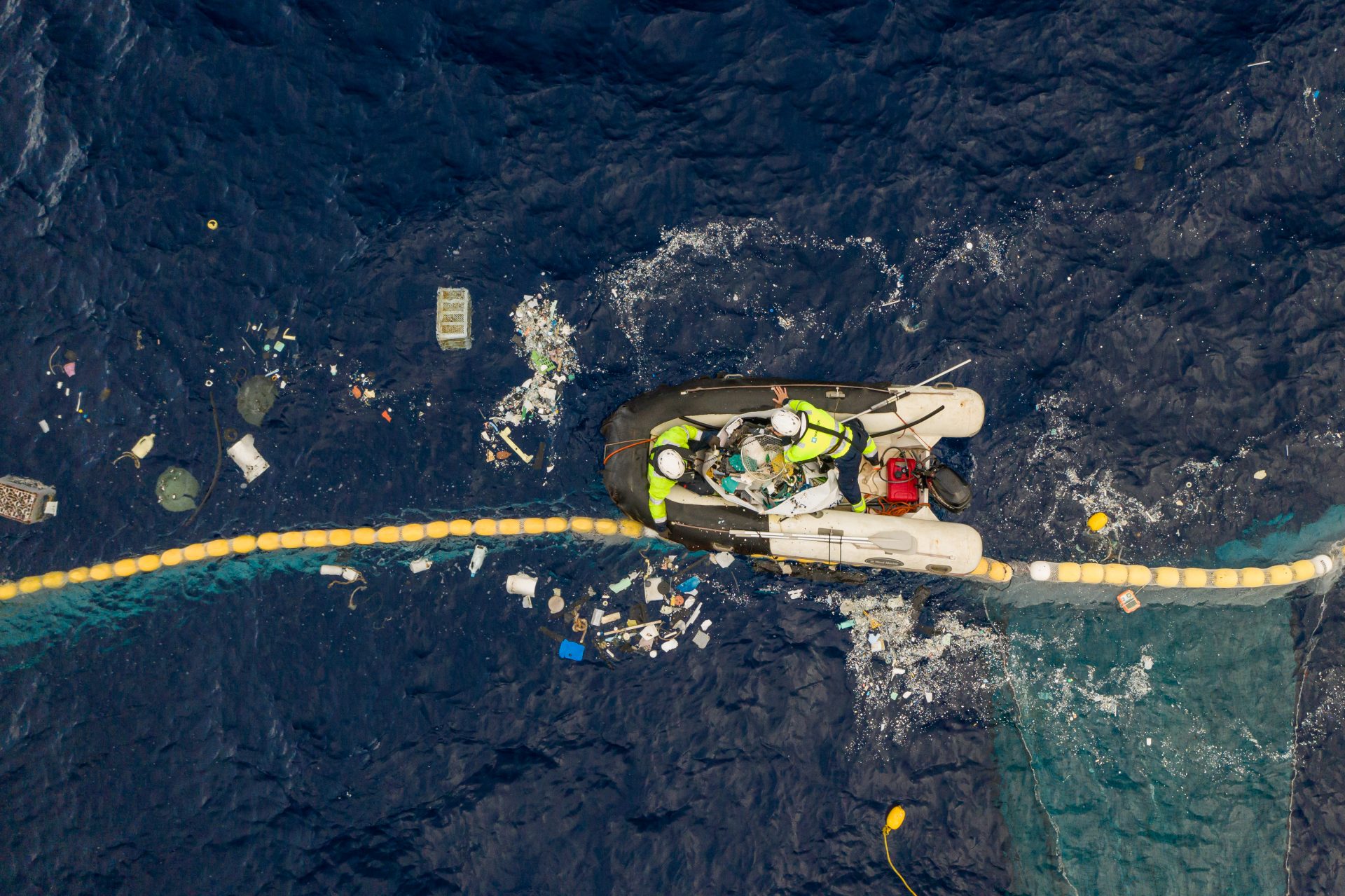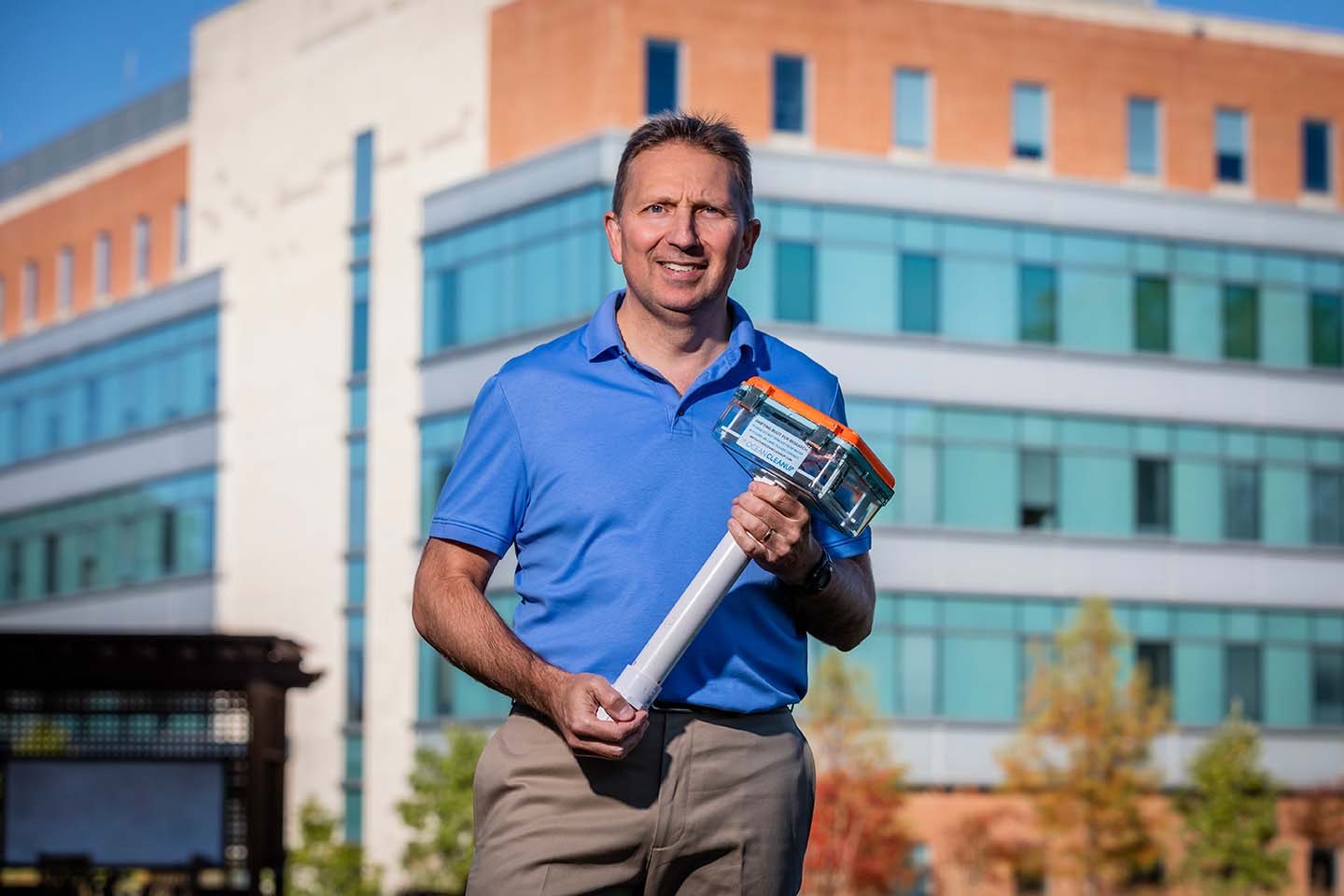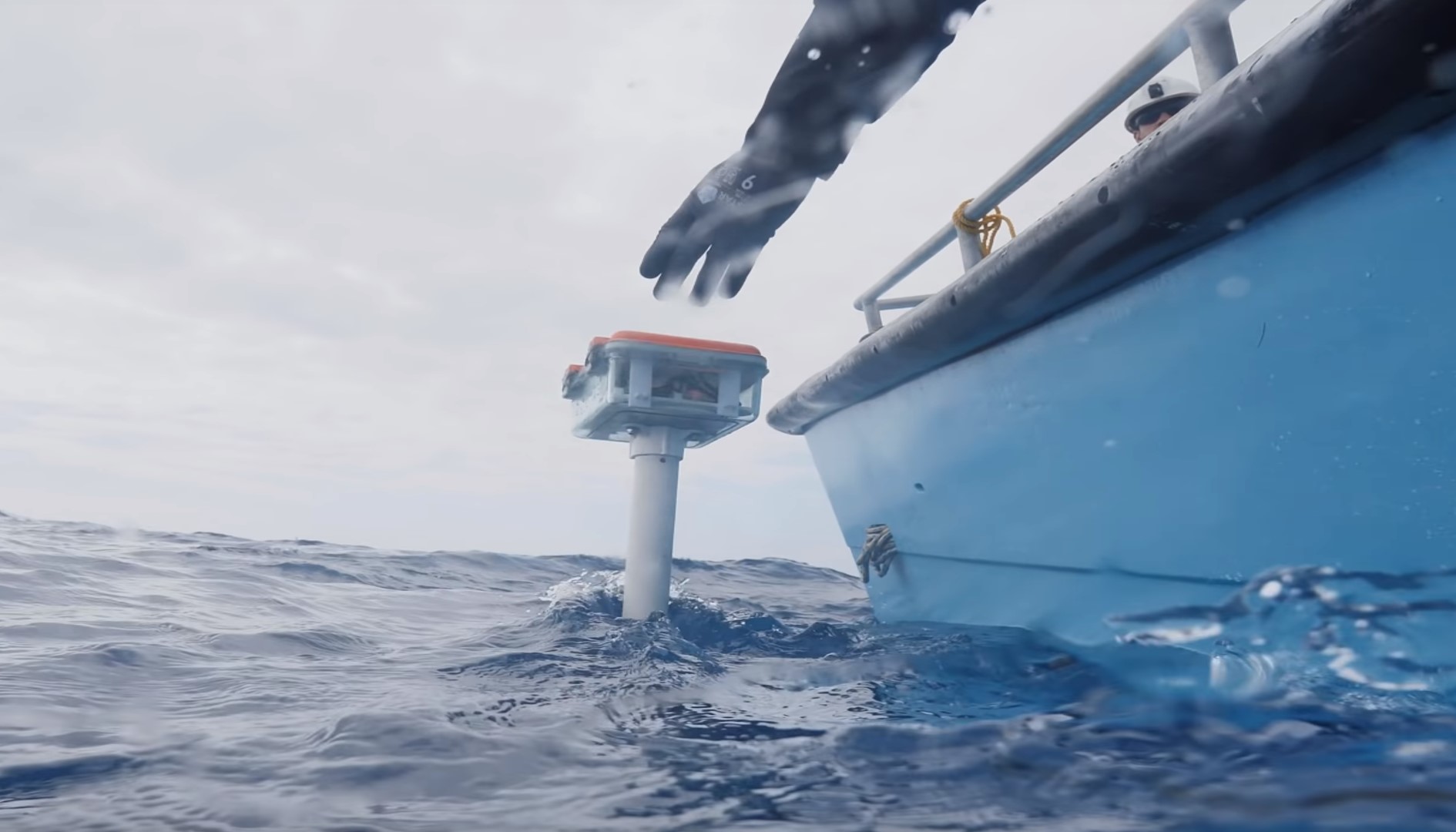Press Release
The Basement Tinkerer: APL’s Pavalko Helps Clean Up Ocean
Some people build race cars in their garages, others start a band in their basement, but few make equipment as a hobby that will help clean up the environment half a world away.
But that’s just what Wayne Pavalko did. His homemade buoys are now part of a system used by The Ocean Cleanup, a nonprofit developing advanced technologies to use ocean currents and passive drifting systems to clean up the Great Pacific Garbage Patch between Hawaii and California.
Pavalko, a program manager with Johns Hopkins Applied Physics Laboratory, didn’t plan on his buoys going worldwide. They began as a curious idea, which turned into a weekend hobby that morphed into a global force for good.
“It started with an interest in learning about the internet of things [IoT], in this case at sea, more specifically following things in the ocean,” said Pavalko, inventor of the Maker Buoy. “I never thought something you could build in a basement could go halfway around the world.”
Pavalko began purchasing equipment from various sources on the internet and assembling the buoy.
The solar-powered buoy is made of readily available as well as 3D-printed parts and, when deployed, moves freely with the ocean currents. It sends position, water temperature and other data to a satellite, which transmits to a ground station and uploads to a website Pavalko developed with Brian Garofalo, a computer scientist in the Asymmetric Operations Sector.
After months of testing and waterproofing, Pavalko created his prototype. But he was faced with another challenge: How could he get it deep enough into the Atlantic Ocean to get to the Gulf Stream?
Luckily, he knew a guy.
“I asked a fisherman I met in Virginia Beach to drop it off the side of his boat when he was done working,” Pavalko explained with a smile. “He thought it was an odd request to drop something off instead of bringing things in, which is what he normally does. But he did it for me and even made a video of the deployment.”


